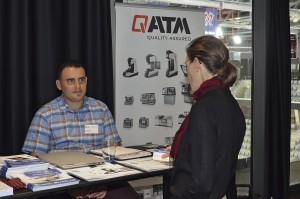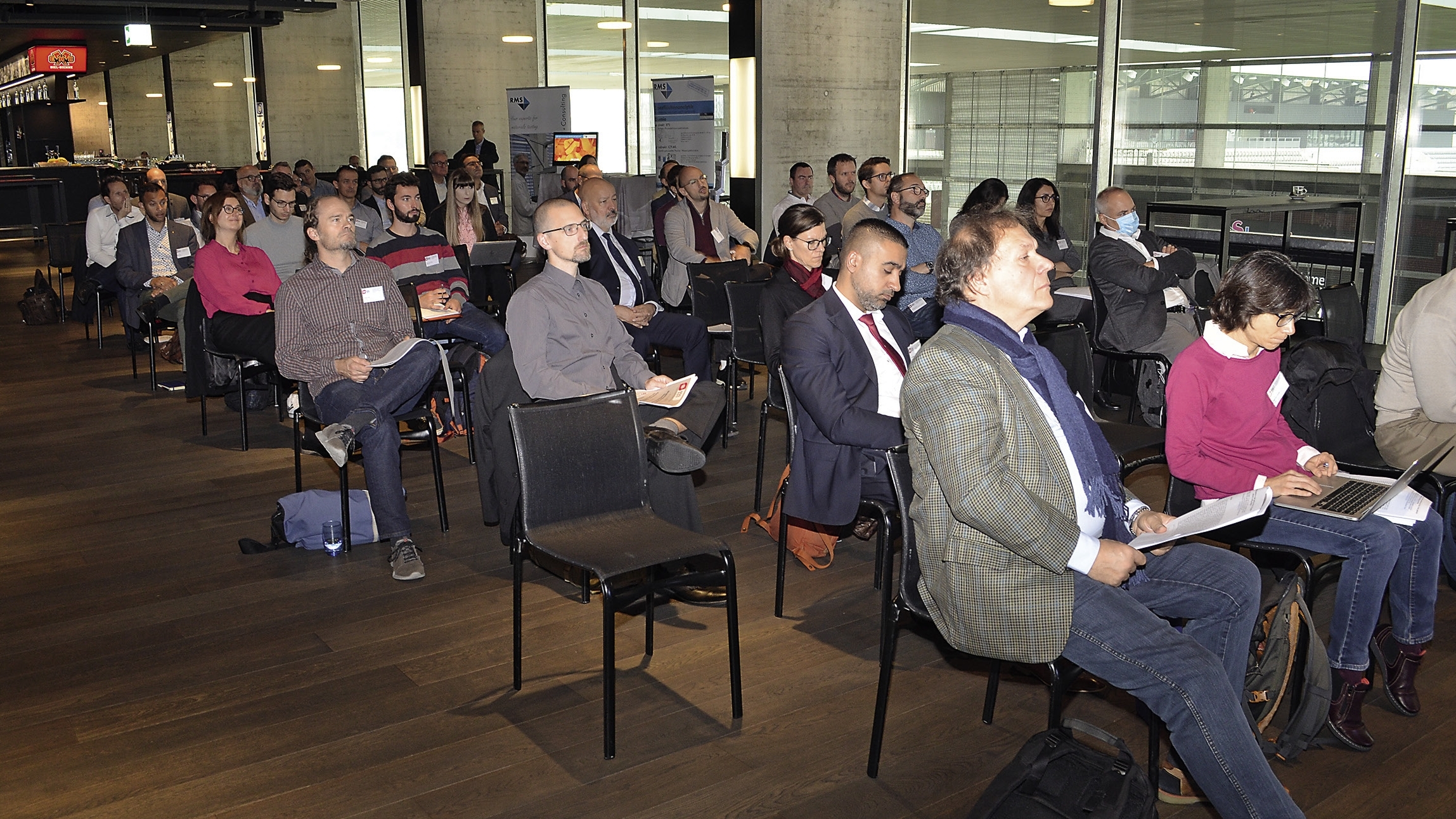Traditionally held in spring, the 2020 technical conference of the Swiss Society for Surface Engineering (SGO) had to be moved to the fall due to the coronavirus crisis. The venue was the Tissot Arena in Biel, on the German-French language border
The exhibition was slightly smaller than usual, but the number of listeners was almost the same as in previous years: just under 50 people made their way to the Tissot Arena in Biel in October. The charm of this event lies in its international character, with visitors coming from German, French and English-speaking countries - typically Swiss. It is therefore not surprising that only the fourth lecture was in German.
Dr. Anna Igual Munoz (Ecole Polytechnique Fédérale de Lausanne) presented the challenges of developing an organic-metallic layer that can be deposited in the daily production process using normal electroplating equipment. Areas of application include sensor technology, electronics, solar panels and medical technology. Effective corrosion protection is also possible with such coatings.
Cedric Buron works at the UTINAM UMR CNRS institute at the University of Bourgogne Franche-Compté in Besançon. His focus is on the optimization of zinc coatings on steel and this has the following background: Buron considers pure zinc coatings to be less effective due to the high susceptibility of zinc to corrosion and the alloying with nickel, for example (to compensate for this), to be problematic due to the allergy potential of nickel. As part of the "Zincadher" project, he is therefore integrating polymers into a zinc matrix.
People lubricate their technical equipment with oil-based lubricants wherever necessary, thus minimizing friction and wear. Nature, on the other hand, lubricates almost exclusively with water. Rok Simic from ETH Zurich has therefore adopted this approach from nature and is working on a hydrogel. To do this, it is also necessary to optimize the surfaces concerned in a certain way by structuring them.
 Interesting products were on display in the adjoining exhibitionTizianiMinghetti (Aalberts Surface Treatment AG, Altdorf) carried outacomparative evaluation of the tribological properties of polymer coatings. In the study, 15 different products of lubricious coatings with a polymer matrix were examined comparatively. The materials included substances such as PTFE, MoS2, graphite, etc. In addition, the substrates were subjected to various pre-treatments such as cleaning, phosphating and many more. The comparison was carried out on standard steel test panels. Minghetti gave an overview of the tests carried out. As a result, he presented the finding that not only the lubricating substances themselves, but also their mixing ratio and the application process are of great importance.
Interesting products were on display in the adjoining exhibitionTizianiMinghetti (Aalberts Surface Treatment AG, Altdorf) carried outacomparative evaluation of the tribological properties of polymer coatings. In the study, 15 different products of lubricious coatings with a polymer matrix were examined comparatively. The materials included substances such as PTFE, MoS2, graphite, etc. In addition, the substrates were subjected to various pre-treatments such as cleaning, phosphating and many more. The comparison was carried out on standard steel test panels. Minghetti gave an overview of the tests carried out. As a result, he presented the finding that not only the lubricating substances themselves, but also their mixing ratio and the application process are of great importance.
Oliver Kerber from Safechem Europe, Düsseldorf, described the advantages of modified alcohols in industrial parts cleaning. They have a high dissolving power and can be used for a wide range of tasks. Unfortunately, it is a fact that moisture and high temperatures, for example, decompose the alcohols, which can lead to discoloration, unpleasant odours and even production downtime. Kerber therefore presented a stabilizer system for cleaning alcohols with the product Maxistab.
Empa (Swiss Federal Laboratories for Materials Science and Technology) sent Dr. Laetitia Philippe from Dübendorf to Biel, who reported on her research into combining organic and metallic materials in the construction of three-dimensional components.
The presentation by Francisco Boo (Metalor Technologies SA, Marin-Epagnier) dealt with the European chemicals regulation REACh and its impact on Swiss products. The regulation does not apply in Switzerland, but it has far-reaching effects on the country's access to European markets.
In her presentation, Aurélie Borruto emphasized the importance of professional component cleaning prior to coating. Various factors play a role here, for example the decision as to whether the components should be cleaned in-house - or outsourced to a professional partner. Furthermore, machines and chemicals must meet certain requirements and, when using aqueous cleaning, the process water must have precisely defined properties. Aurélie Borruto works in the R & D department of NGL Cleaning Technology SA in Nyon.
The presentation by Simona Rohrer from the RMS Foundation, Bettlach, also dealt with component cleanliness. Rohrer divided the component contamination that occurs into three categories, namely chemical (organic and inorganic) contamination, biological (endotoxins) contamination and particulate contamination.
Finally, the focus was on cleaning processes in medical technology, where the author Alex Moser from Amsonic AG had a home game, as his company is based in Biel. Moser presented three cleaning processes, namely cleaning with alcohol, spray cleaning in cleanroom containment and immersion cleaning with ultrasound and vacuum. The largest amounts of contamination must be removed in the pre-cleaning stage in order to achieve shorter cleaning cycles in the subsequent fine cleaning stage. The cleaning and the degree of cleanliness must be defined.


